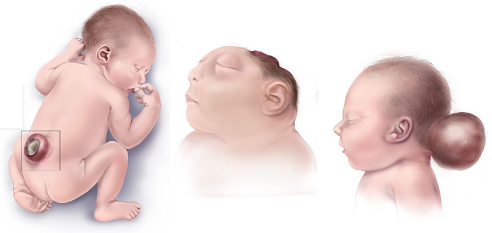Mothers and Babies
Why Fortify?
Photo: World Bank/Flickr
Protect Babies from Birth Defects, Mothers from Anemia
Women who may become pregnant need adequate nutrition to prepare for the additional physical demands of pregnancy.
Women who regularly consume foods fortified with folic acid are less likely to have an infant with a brain or spine birth defect, also called a neural tube defect (NTD). Women who are not planning a pregnancy may not be taking prenatal supplements, and most people do not consume the equivalent of 400 micrograms of folic acid (vitamin B9) daily from unfortified food. Taking folic acid supplements after the pregnancy is confirmed is usually too late to protect against brain and spine birth defects.
While fortification does not provide all the iron a woman needs in pregnancy, consuming foods fortified with iron helps women enter pregnancy with adequate nutrient stores. This makes it less likely that they will develop severe iron deficiency during pregnancy.
Nutritional Needs
Women need 400 micrograms of folic acid daily before conception and for at least 28 days after conception to reduce the risk of the infant having a severe birth defect of the brain or spine.
In early pregnancy, a woman’s need for iron increases from 0.8 to 7.5 milligrams per day. In addition, iron, riboflavin, folic acid, zinc, vitamin A and vitamin B12 prevent specific types of anemia, which in pregnancy is dangerous for both the mother and the baby.
Consequences of Deficiencies
Photo: US Centers for Disease Control and Prevention
Birth Defects
A study published using FFI data found that 61,677 birth defects of the brain and spine were prevented in 2020 due to flour being fortified with folic acid —an average of 169 healthier babies every day. Adequate folic acid intake can prevent most cases of three congenital defects: spina bifida, anencephaly, and encephalocele.
In spina bifida, the baby’s spine does not form correctly. In mild cases, permanent loss of some sensation or movement occurs. Severe cases include paralysis and varying degrees of loss of bowel and bladder control. Children born with spina bifida will likely undergo a lifetime of surgeries and face many health issues. Spina bifida cannot be cured.
With anencephaly, the brain does not form properly. Pregnancies affected by anencephaly are often miscarried. Babies born with anencephaly die shortly after birth.
With encephalocele, part of the brain protrudes through the skull. This is a rare birth defect.
Anemia
Pregnant women with severe anemia are twice as likely to die during or shortly after pregnancy than non-anemic women. Also, anemic women in low and middle-income countries have a significantly higher risk of having a low-birth-weight infant than non-anemic women. Low birth weight means less than 2500 grams or 5.5 pounds at birth; infants that small are prone to death and diseases while they are young. If they survive, they are more at risk for poor mental development in childhood and chronic health problems such as diabetes and heart disease later in life.
In response to the global burden of anemia, the World Health Assembly in 2012 issued a call to action to countries to target a 50% reduction in anemia among women of reproductive age by 2025. At full scale-up, this could prevent 265 million cases of anemia in women by 2025 compared to 2015, reduce anemia prevalence to 15.4% in women of reproductive age, and avert 800,000 childhood deaths. Further, health economists estimated that reaching the goal of global reduction in anemia among women of reproductive age would need an investment of US $12.9 billion between 2015 and 2025 and recommended allocating 20% of the investment towards fortification of staple foods (e.g., wheat flour, maize flour, and rice) with iron and folic acid at WHO guidelines levels and delivered through marketplace.
Sustainable Development Goals
Periconceptual nutrition addresses the Sustainable Development Goal 3 for reproductive, maternal, and newborn heath. Adding nutrients to grains commonly consumed by women of reproductive age is a strategy to reduce maternal and infant mortality and improve maternal and newborn health.
Photo: istockphoto
Improve the nutrition of breastfeeding mothers, developing infants
Breastfeeding is a critical time for a child's development and a demanding time for the mother’s body. The mother needs increased nutrition in her diet to produce enough quality breast milk for her newborn to grow and be healthy. Mothers are at risk of developing diseases and illnesses if they are malnourished while breastfeeding.
Fortifying food with vitamins and minerals increases the nutrition for breastfeeding mothers and simultaneously benefits their children. In Cameroon, iron, zinc, and folate levels improved among breastfeeding women after wheat flour was fortified. Also after fortification, the prevalence of anemia decreased among all women, and vitamin B12 in breast milk increased incrementally.
Nutritional Needs
Vitamin A recommendations increase from 700 µg to 750 µg/day during breastfeeding, vitamin B12 recommendations increase by 0.4 mg/day, and an additional 3.2 mg/day of zinc is recommended for breastfeeding women.
Newborns also have high nutritional demands. The current recommendation to ensure good nutritional status for them is to exclusively breastfeed babies for six months, and to continue breastfeeding into the second year of life.
Consequences of Deficiencies
Infants need vitamins A, D, K, C, B1, B6, B9 (folate) and B12, but the levels of these vitamins decrease in breast milk when the mother is experiencing vitamin deficiency. Without these necessary vitamins, the newborn is at risk of developmental delays and malnourishment.
Mothers are also at risk of illness when they are not properly nourished while they are breastfeeding. For example, the combined demands of milk production and menstruation could draw heavily on the mother’s iron reserves, putting her at risk of anemia.
Extent of Problem
When intake of energy and other nutrients does not increase during pregnancy, lactation, and periods of high physical activity, a woman’s own reserves are used, leaving her weakened and malnourished. During lactation, maternal stores of energy, protein, and other nutrients need to be established, conserved, and replenished to ensure both the health of the mother and adequate levels of micronutrients in her breast milk for her newborn.
In developing countries, “a malnourished mother usually gains only 5-7 kgs during pregnancy, which means not enough stored fat, and her daily intake of nutrients falls below the recommended level; the volume of milk produced is not enough… these facts may help explain the high mortality rate in wholly breastfed infants in some developing countries.”







